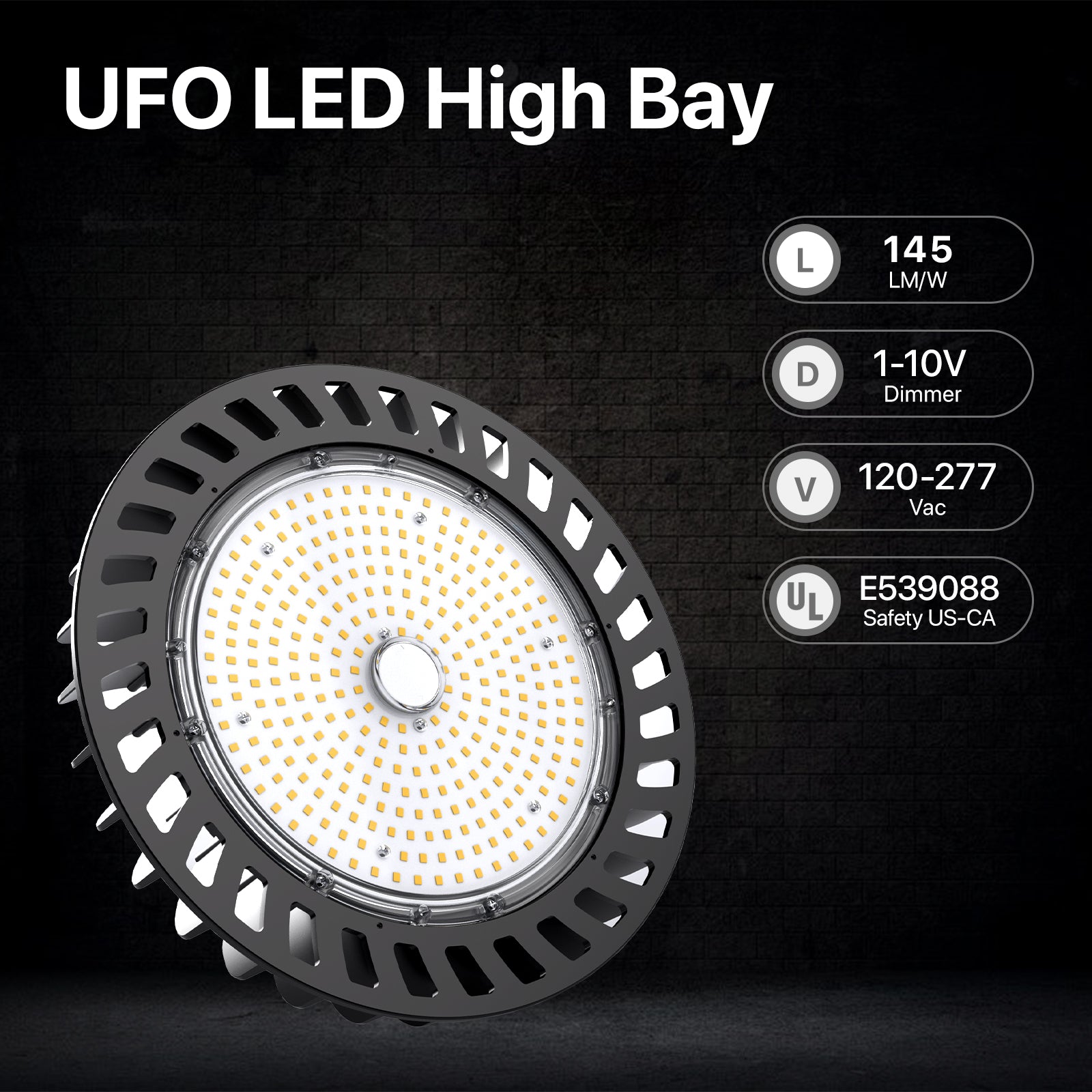Illuminate Your Warehouse: Discover the Ultimate High Bay Lighting Solutions!
In the bustling environment of a warehouse, proper lighting isn’t just a luxury; it's a necessity. High bay lighting plays a critical role in ensuring safety, enhancing productivity, and promoting energy efficiency within these expansive spaces. With the right illumination, workers can navigate aisles and handle equipment with confidence, reducing the risk of accidents and increasing output. High bay lights are designed specifically for areas with high ceilings, often exceeding 15 feet, making them ideal for warehouses and industrial settings. In this article, we will delve into the various types of high bay lights available, their unique benefits, essential features to consider, and tips for successful installation.

Understanding High Bay Lighting
High bay lighting refers to fixtures that are effective for lighting spaces with high ceilings, typically ranging from 15 to 25 feet. These fixtures are essential for warehouses, manufacturing plants, gymnasiums, and other commercial spaces where conventional lighting may not suffice. The primary goal of high bay lights is to provide uniform illumination over a large area, which is crucial for safety and efficiency. They help reduce shadows and dark spots, allowing workers to see clearly as they move around the space. As someone who has worked in a warehouse, I can attest that the difference in visibility when high bay lights are installed is remarkable; it not only makes the environment safer but also more pleasant for everyone involved.
Types of High Bay Lights
When considering high bay lights, there are several types to choose from, each with its unique characteristics and advantages. One popular option is LED high bay lights, known for their energy efficiency and long lifespan. LEDs consume significantly less power than their counterparts, making them an economical choice in the long run. Another alternative is metal halide lights, which offer bright, white light and are suitable for applications requiring excellent color rendering. However, they have a shorter lifespan and higher energy consumption compared to LEDs. Lastly, fluorescent high bay lights, while less commonly used nowadays, can be a cost-effective solution for warehouses with lower ceiling heights. Each type has its ideal use case, depending on the specific needs of the warehouse environment and the budget available.
Benefits of High Bay Lighting
The advantages of using high bay lights in warehouses are numerous. First and foremost, they significantly improve visibility, which is crucial for maintaining safety standards. Good lighting helps reduce the likelihood of accidents, ensuring that workers can perform their tasks efficiently and without fear of injury. Additionally, high bay lights often boast energy-efficient designs, particularly the LED options, which can lead to substantial savings on electricity bills over time. The longevity of these lights also means that maintenance costs are reduced, as replacements are less frequent. In conversations with friends who manage warehouses, they often highlight how improved lighting has directly correlated with increased productivity, as workers feel more energized and focused in well-lit environments.
Key Features to Consider
When selecting high bay lighting for a warehouse, several key features should be taken into account. Lumen output is one of the most critical aspects, as it determines the brightness of the light. A higher lumen output is necessary for larger, more expansive spaces. Color temperature is another factor, impacting the ambiance of the warehouse; cooler temperatures (5000K) can create a bright, alert environment, while warmer temperatures (3000K) may offer a more relaxed feel. The beam angle of the lights also matters, particularly in ensuring that light is distributed evenly across the floor. Additionally, consider dimming capabilities that allow for adjustable brightness based on the time of day or specific tasks being performed. Each of these features can greatly influence the effectiveness of the lighting solution in your warehouse.
Installation Considerations
Installing high bay lights requires careful planning and consideration to ensure optimal performance. One of the first steps is determining the appropriate mounting height based on the ceiling height and the specific lighting needs of the space. Wiring considerations must also be taken into account, as improper connections can lead to safety hazards and inefficient lighting. It's crucial to follow safety protocols during installation to prevent accidents. While some may consider a DIY approach, enlisting the help of professionals is highly recommended. Proper installation not only guarantees the lights function as intended but also extends their lifespan, ensuring that your investment yields the best possible results.
Choosing the Right High Bay Lighting for Your Warehouse
In summary, selecting the right high bay lighting solution for your warehouse is essential for enhancing visibility, ensuring safety, and improving energy efficiency. With various types available and numerous benefits to enjoy, it’s crucial to consider the specific needs of your space before making a decision. By keeping in mind the key features and installation considerations discussed in this article, you can make an informed choice that will positively impact your warehouse operations. Investing in quality high bay lighting is not just about illumination; it's about creating a productive and safe working environment that benefits everyone involved.





